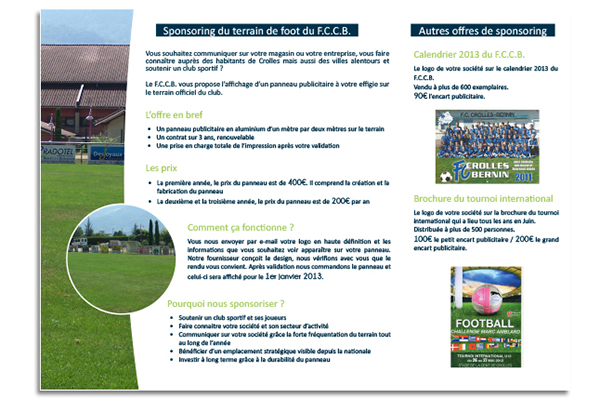
Rate of Return Formula What is Rate of Return Formula? Examples


Let us first find out returns from each security at the end of 1 year. The weight of equity is the market value of equity divided by the market value of equity and debt. Harkat Tahar is a professional academic researcher with more than 6 years experience. Let’s take an example to understand the calculation of the Required Rate of Return formula in a better manner.
In corporate finance, when looking at an investment decision, the overall required rate of return will be the weighted average cost of capital . The expected rate of return is the percentage of anticipated return that the investor gets after a certain time. It suggests whether the investing amount will bring positive or negative return outcomes. The ratio is a widely used concept in financing and it is important to understand how it works before making any investment decisions. The concept is considered a foundational concept in corporate finance and valuation because of its wide application in many other financial calculations. It acts as a threshold that defines which investments are feasible and which are not.
- Some would even argue that, under certain assumptions, the capital structure is irrelevant, as outlined in the Modigliani-Miller theorem.
- As with any financial ratio or metric, it’s best to utilize multiple ratios in your analysis when considering investment opportunities.
- Among the many metrics utilized by finance professionals, required rate of return is a keystone concept that drives many other calculations.
- Therefore, Adam realized a 35% return on his shares over the two-year period.
- Capital Asset Pricing ModelThe Capital Asset Pricing Model defines the expected return from a portfolio of various securities with varying degrees of risk.
Calculate the required rate of return of the stock based on the given information. Let us take an example of a stock with a beta of 1.75, i.e., it is riskier than the overall market. Further, the US treasury bond’s short-term return stood at 2.5%, while the benchmark index is characterized by a long-term average return of 8%.
I hope the information provided in this blog could help you in analyzing your business and make appropriate strategies based on return reasons or customer feedback. You being the owner of your business, knows what best for your organization. After all only a sailor knows the capabilities of his own boat. Returns can cost something more than just financial losses i.e., your loyal customers. If the service you provide is not upto the mark, you could end up losing your regular customers.
5. RRR vs. Cost of Capital¶
The rate of return is compared with gain or loss over investment. The rate of return expressed in form of percentage and also known as ROR. The rate of return formula is equal to current value minus original value divided by original value multiply by 100. In addition to being used by investors, the RRR is also used in corporate finance when analyzing the profitability of future investments. A financial manager usually calculates the RRR for the company in order to use it as a threshold. When the estimated profitability of a project is higher than the RRR, the financial manager accepts the project and vice versa.

Below is data for calculation of the required rate of return for Security A and Security B. The CAPM method calculates the required return by using the beta of security, which is the indicator of the riskiness of that security. Usually a broader index like the S&P 500 captures something close to the average return on all stocks. Moreover, the RRE does not include any risk involved when we make an investment in a certain asset.
Hence, the investor will reject any investment in company A and C, and will invest in company B. A company is expected to pay an annual dividend of $3 next year, and its stock is currently trading at $100 a share. The company has been steadily raising its dividend each year at a 4% growth rate. The required rate of return is a difficult metric to pinpoint because individuals who perform the analysis will have different estimates and preferences.
After holding them for two years, Adam decides to sell all 10 shares of Company A at an ex-dividend price of $25. Adam would like to determine the rate of return during the two years he owned the shares. A Rate of Return is the gain or loss of an investment over a certain period of time.
Rate of Return (RoR) on Investments That Yield Income
In this case, you don’t need to consider the length of time, but the cost of investment or initial value and the received final amount. The following problem outlines an example of how to calculate a required rate of return. The numbers used in this example will be simplified, but the steps in calculated the required return are the same.

Otherwise, the investment will not be considered if its accounting rate of return is too low. From the rate of returns KPI, firstly separate two aspects that are important. The following table shows the typical return rates for consumer e-commerce categories. The Internal Rate of Return is the annual rate of growth that an investment or project generates over time.
One can make tweaks in their inputs and try to understand the amount to invest in order to earn particular returns. If an investment can’t be sold for a period of time, the security will likely carry a higher risk than one that’s more liquid. Market risk is the possibility of an investor experiencing losses due to factors that affect the overall performance of the financial markets. If an investment can’t be sold for a period of time, the security will likely carry a higher risk than one that’s more liquid. The RRR calculation does not factor in inflation expectations since rising prices erode investment gains. However, inflation expectations are subjective and can be wrong.
Also, comparing stocks in different industries can be difficult since the risk or beta will be different. As with any financial ratio or metric, it’s best to utilize multiple ratios in your analysis when considering investment required rate of return formula opportunities. The WACC determines the overall cost of the company’s financing. Therefore, the WACC can be viewed as a break-even return that determines the profitability of a project or an investment decision.
Resources created by teachers for teachers
Now, let’s see another example to understand the rate of return formula. Let us see an example to understand rate of return formula better. It is determined that although the returns are similar, yet Security B gives a little return.
The IRR calculation would take these interim cashflows into consideration. The precise answer is 12.379%, which appears if you set the initial investment to $1,000 with a final amount of $5,000, 10 years investment length, and $100 periodic deposit. With these principles taken into account, predicting whether an investment will make a profit or lose money has never been easier. Similarly, a rate of return that considers taxes or economic surges is referred to as the real rate. A decent rate of return is typically thought to be around 7% each year.
For example, you can forecast and evaluate your business performance by calculating the return rate based on your initial investment and previous net income. On the other hand, the IRR formula can also help you choose what to invest in; a higher IRR rate equals a better investment opportunity. The CAGR presents the total return over a holding period as an effective annualized rate. The rate of return formula calculates the total return on an investment over a period of time. It is expressed in the form of a percentage and can be referred to as ROR. However, keep in mind that the rate of return may have different meanings depending on its context.
Expected rate of return is the estimation of profit which investors receive from investment over a period of time. In order words, it is the growth of investment after a month, quarter, or year. It will be calculated by the potential outcome and possibility of each outcome then sum all of the results together. Finally, in asset valuation, the required rate of return is used in various types of calculations that help to discount future value to present value. Often referred to as the discount rate, it is used in discounted cash flow valuations and is also used in Net Present Value calculations.
The RRR is what’s needed to go ahead with the project although some projects might not meet the RRR but are in the long-term best interests of the company. Subtract the risk-free rate of return from the market rate of return. Understand what the required rate of return is, examine the required rate of return formulas, and learn how to calculate it.
In other words, the rate of return is the gain compared to the cost of an initial investment, typically expressed in the form of a percentage. When the ROR is positive, it is considered a gain, and when the ROR is negative, it reflects a loss on the investment. Here is an example to calculate the required rate of return for an investor to invest in a company called XY Limited which is a food processing company. To accurately calculate the RRR and make it more meaningful, the investor must also consider their cost of capital, as well as the return available from other competing investments.
Are there any decision rules for the Accounting Rate of Return?
The Structured Query Language comprises several different data types that allow it to store different types of information… From equities, fixed income to derivatives, the CMSA certification bridges the gap from where you are now to where you want to be — a world-class capital markets analyst. Risk-return tradeoff is a fundamental trading principle describing the inverse relationship between investment risk and investment return. Company B has a beta of 0.50, which implies that it is less risky than the overall market. Let’s say Company A has a beta of 1.50, meaning that it is riskier than the overall market . Let’s see some simple to advanced examples to understand the calculation of the Required Rate of Return better.
Choosing the most appropriate project is an important decision for any company. This will give you an accurate picture of your annual net profit. This guide will provide an overview of AROR and explain how to calculate it accurately. We will also discuss its advantages, limitations, and some useful tips to consider when calculating AROR.
Expected Rate of Return Formula
If we want to get a higher return, we must face high risks as well. There is no such kind of investment that produces a high return without a big risk. When evaluating an investment project, there are many methods that can be used in order to determine its viability. Datarails replaces spreadsheets with real-time data and integrates fragmented workbooks and data sources into one centralized location. This allows users to work in the comfort of Microsoft Excel with the support of a much more sophisticated data management system at their disposal.
So, through the rate of return, one can calculate the best investment option available. We can see that investor earns more profit in the investment of Google then in Apple, as the rate of return on investment in Google is higher than Apple. An investor purchased a share at a price of $5 and he had purchased 1,000 shared in year 2017 after one year he decides to sell them at a price of $10 in the year 2018. Now, he wants to calculate the rate of return on his invested amount of $5,000.






























Recent Comments